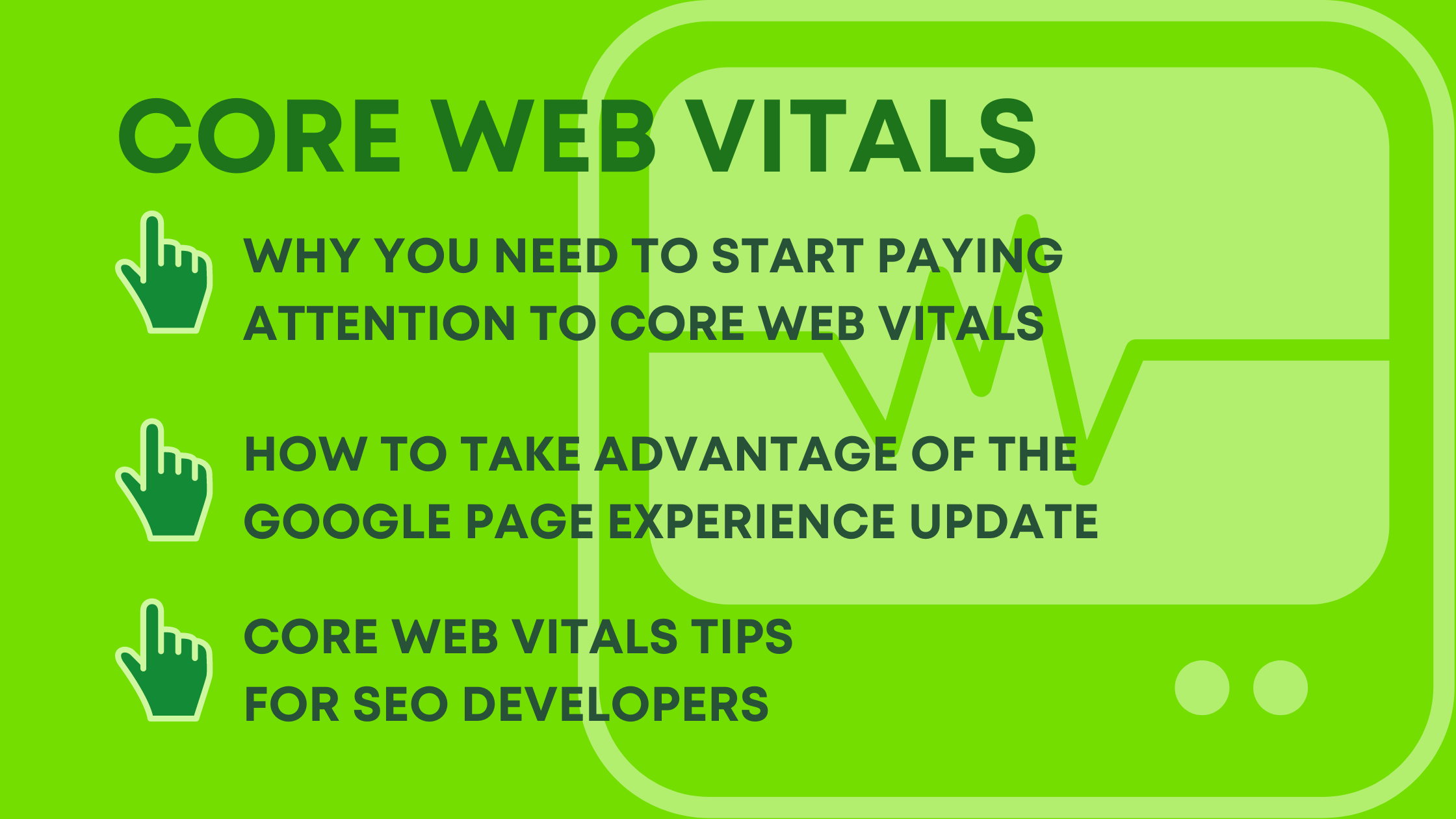Why You Need To Start Paying Attention To Core Website Vitals
Google has always placed a great deal of importance on User Experience (UX). In fact, every Google algorithm update has been about ensuring that users can gain access to user-friendly, relevant results quickly.
With the introduction of Core Web Vitals, UX will play a vital role in increasing organic traffic. Therefore, we must understand all that we can about these Core Web Vitals.
What Exactly Are Core Web Vitals?
For the past few years, Google has been pushing website owners to go mobile-first. Building a mobile-friendly website is now crucial to SEO success.
Taking it a step further, Google is now ready to focus on mobile performance, also known as Core Web Vitals.
This summer, we will see algorithm updates that will focus on a new ranking factor: page experience. Google will be measuring page experience using Web Vitals metrics. Largest Contentful Paint (LCP), First Input Delay (FID), and Cumulative Layout Shift (CLS) are the core metrics within Web Vitals.
How Will the Core Web Vitals Impact SEOs?
Search engine algorithms work by helping users find the information they need while collecting data that throws light on user behavior, which helps provide more relevant results.
Websites that meet searchers’ needs naturally rank higher in the search engine results and enjoy increased organic traffic. With Google focusing on improving UX, paying mind to Core Web Vitals will mean the difference between SEO success or failure.
By optimizing for the new ranking factor, one can see a drastic rise in their organic traffic. The Core Vitals report in Google Search Console will tell you exactly which pages on your website need improvements in terms of UX.
What’s Important
While it may all seem very technical, it is important to understand what is being measured by the Core Web Vitals. To put it simply, Core Web Vitals focus on three aspects of a good UX:
- Loading Performance
- Responsiveness
- Visual Stability
These aspects are measured based on the user data from Chrome’s user experience report. You can check out the data for your website using the Google Data Studio report. This report offers detailed data on the important aspects of Core Web Vitals and information about usage on different devices.
The Three Main Elements of Core Web Vitals
1. Largest Contentful Paint (LCP)
LCP is a metric used to measure how long it takes for the largest element of a webpage to load. This metric applies to the loading of the above-the-fold content; anything beyond a user’s screen is not considered.
Overall, LCP measures images, video poster images, block-level text elements, and elements that come with a background image. You can measure your website’s LCP with the help of lab scoring tools, like PageSpeed Insights and Lighthouse.
Ways to Optimize for LCP
Google suggests that the LCP should happen within 2.5 seconds of page loading. Anything that takes longer than 2.5 seconds to load needs improvement.
Ideally, you should be able to reduce the LCP time by doing the following:
- Optimizing the images – Ensure you choose the right format, incorporate width and height attributes, and use compressed images whenever necessary.
- Optimizing your server – You may want to upgrade your hosting plan and use a CDN to improve the server performance.
- Adding caching – Make sure you use URLs consistently and ones that cache stored images.
- Fixing render-blocking CSS and JavaScript – See if you can implement Critical CSS, deliver smaller payloads, and compress the code file.
2. First Input Delay (FID)
FID is a metric used to measure a user’s first interaction, meaning the delay between when a person clicks on something and the time it takes for the site to respond to the action and process it. However, it only measures finite user interactions, like clicks, taps, key presses, and not continuous interactions like scrolling and zooming.
Ways to Optimize for FID
Monitoring and optimizing your site’s UX is the only way you can do well with this metric. Ideally, your site’s FID score should be no more than 100 ms. If it goes beyond that, your site’s UX needs improvement.
Try the following to improve your site’s FID score:
- Optimize the JavaScript code – Try breaking up long tasks, minimizing unnecessary polyfills, and deferring or a-syncing unused JavaScript.
- Optimize the CSS code – See if you can remove the unused CSS code and try compressing your files.
3. Cumulative Layout Shift (CLS)
CLS is a metric used to measure the visual stability of your site. It checks whether any unexpected shifting of any of your page elements and how often it occurs.
Ways to Optimize for CLS
Generally, you should be able to avoid unexpected items shifting by doing the following:
- Opting for transform animations with context and continuity
- Avoiding inserting any content above your existing content
- Incorporating size attributes, such as width and height, on your image and video elements
To understand which elements on your site keep you from getting a good CLS score, check out the Layout Shift GIF Generator tool.
Final Takeaway
It is a known fact that users now expect and tolerate nothing less than a seamless web experience. To ensure that your site delivers just that, it is essential to invest in LCP, FID, and CLS improvements. After all, an improved user experience is key to higher rankings and increased organic traffic.
For help with Core Web Vitals, get in touch with our expert team for assistance.
How To Take Advantage Of The Google Page Experience Update
To understand how a user will perceive the experience of a specific web page, Google will evaluate a set of signals. This includes existing Google Search signals such as mobile-friendliness, safe-browsing, HTTPS, and intrusive interstitial guidelines. It also includes metrics in Google’s Web Vitals that have to do with a site’s loading speed, interactivity, and visual stability.
How to prepare for the Page Experience update?
For site owners and others, understanding these signals and making the necessary changes should be a priority among the steps to optimize for mobile and improve page speeds, CTAs, and alt text for images.
You can start preparing now for user experience to become a ranking factor. The Core Web Vitals report in Google Search Console is an excellent place to get a sense of how your site performs in these areas. Alternatively, you can make use of the PageSpeed Insights tool by Google (which is a part of our SEO Audit) to understand how your site stacks up.
How are we helping our clients with the Page Experience update?
To cope up with the update, we are already doing the following things for our clients:
- Implementing search-friendly alt texts for images while doing on-page optimization of your website
- Implementing relevant schema tags on the website
We have also updated our SEO Audit Reports to bring back the Mobile and Desktop Page Speed Insights sections, which are critical for improving the Page Speed experience for users. In addition, our Audit also shows the Website HTTPS (secure website) status, which is a critical ranking factor concerning this update.
By showing this to our clients, it presents an opportunity for us to provide add-on services like “mobile-friendly optimization,” “improving page load speed,” “making a website secure,” “CTA optimization,” “landing page optimization,” etc. If you’re interested, our team can discuss further how to best provide these services to your business at a minimal cost.
For more information, get in touch with our reps.
Core Web Vital Tips For SEO Developers
Here are a few important tips on responding to the Core Web Vitals ranking signal going LIVE.
Reduce JavaScript (JS) Execution – If your report shows a poor FID score, consider reducing and optimizing your JS execution. As per Google, one of the ways to reduce the execution is by deferring unused JS. Start by cutting down unused JS, which can be done using code splitting.
Implement Lazy Loading – Implementing lazy loading is essential if you display images on your site. With lazy loading, your site’s UX and core web vitals score will remain unharmed. For sites with heavy elements, such as images, animations, or videos, lazy loading is considered a must. It allows for loading images as users scroll down through the page without compromising the overall website loading speed. Lazy loading offers many other benefits, including:
- Improves site performance
- Limits bandwidth usage
- Improves your site’s SEO
- Reduces bounce rate by keeping visitors on the page
Optimize & Compress Images – For some websites, the largest element is images. Optimizing images will make your page significantly lighter, thus improving several factors:
- Loading speed
- LCP score
- UX
- Search engine rankings
There are many free tools available that let you compress your images, and compression won’t affect the quality of your images. Always be sure to save landscape images in .jpg format and graphics in .png format.
Provide Proper Dimensions for Images & Embeds – A CLS score below 0.1 is considered to be poor. To improve your CLS score, you need to have your dimensions in place. Setting proper width and height helps the browser allocate the correct amount of space on the page while the element is loading.
Also, make sure to set proper dimensions for embeds, like when inserting videos from YouTube into your site. At times, the video might look proper on the backend, but it may end up looking way too big or messy on the front end. See to it that the video you insert goes well with the interface of your site.
Improve Your Server Response Time – Google says, “The longer it takes a browser to receive content from the server, the longer it takes to render anything on the screen. A faster server response time directly improves every single page-load metric, including LCP.”
Most importantly, a long server response time can negatively affect your SEO and UX. Google suggests that your server response time be lower than 600 milliseconds. To measure server response time, use Time to First Byte (TTFB). But before you begin, note down the details on your server’s current performance so you can compare the results later on.
◦ Check how fast is your web hosting.
◦ Use CDN (Content Delivery Network) for your site.
◦ Review your plugins.
To Summarize It All
What you really need to do is pay very close attention to your competitors. You do not necessarily have to meet or exceed Google’s Core Web Vitals guideline scores, but rather meet or exceed your competitors’ scores. Next, you should focus on the content quality of your site and its relevance in terms of the search terms you’re looking to rank for.
Need help? Get in touch with our experts for assistance.

